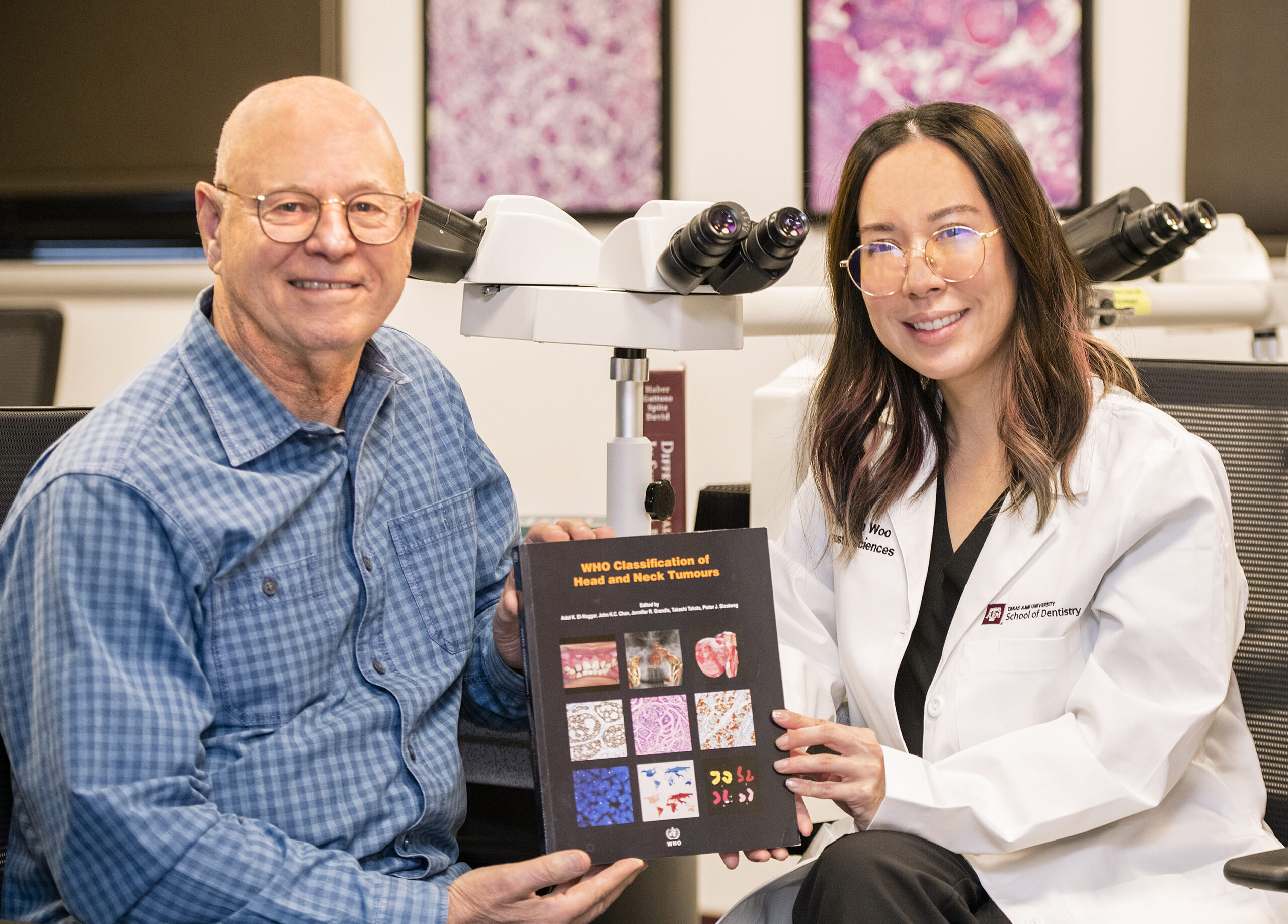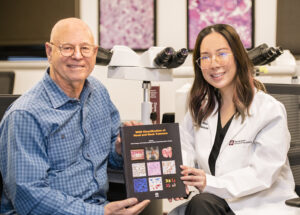Expertise of Wright and Woo sought for worldwide project

The expertise of two faculty members at Texas A&M School of Dentistry was called upon to develop and write portions of the reference book, “World Health Organization (WHO) Classification of Head and Neck Tumours,” which was published earlier this year.
Dr. John Wright, Regents professor, and Dr. Victoria Woo, clinical professor and director of pathology and the advanced education program in oral and maxillofacial pathology, both in the Department of Diagnostic Sciences, were among only about 40 contributors worldwide invited to participate.

“They seek really high profile, experienced pathologists to create this,” Wright said. “It’s one of the greatest honors I’ve had in my life to get picked by the WHO to do this work.”
Classification of head and neck tumors is part of the larger “WHO Classification of Tumours,” also known as the WHO Blue Books, which documents tumors in all organ systems of the body. The WHO’s International Agency for Research on Cancer in Lyon, France, is responsible for the publication of the classification series, currently in its fifth edition. It was previously updated every 10 years, but it recently shifted to a five-year cycle because “the science is moving so quickly,” Wright said.
“The WHO classification is pretty much considered the bible,” he explained. “Almost every practicing pathologist in the world will get access to the WHO classification. As oral pathologists, we’re included in the head and neck tumors category because of the uniqueness of odontogenic cysts and tumors, which come from the tissues that make our teeth.
“Quite frankly, the only pathologists in the world who know anything about this area are oral pathologists.”
Wright said tumor research is mostly at the molecular level, studying the genes in the cells.
“Every cancer in the body is due to genetic mutations, and we now have the ability to find those mutations and study them, so most of the research is on the molecular or genetic characterization of these tumors,” he said. “Our contribution is in three major areas: odontogenic cysts, cystic lesions that arise from our tooth forming cells; odontogenic tumors, benign and malignant; and allied lesions, lesions that don’t arise from the tissues that make our teeth but occur with great frequency in the mouth.”
This is the second time Wright has participated in the process, the first being in 2017 when he was one of seven international pathologists who determined the classification and assigned the writing to authors around the world. This year Wright served on an expert panel, acting as a consultant to the editors. He and Woo both wrote sections of the current publication.
“The opportunity arose, and I jumped at it,” Woo said. “It was a great chance to work with other contemporaries and well-respected pathologists in the field. It was an honor to be part of the process.”
Texas A&M School of Dentistry was the only institution with two faculty members participating in the 2022 classification process. Wright explained that no more than two faculty members from one institution are allowed, but rarely are two from the same institution asked to participate.
“When you consider how many oral pathologists there are in the world, it says a lot about this school and this division that the WHO would tap two people from here to help determine and write this,” he said.
Dr. Madhu Nair, interim department head of diagnostic sciences, shared his congratulations with Wright and Woo, noting their participation in the process set the Texas A&M School of Dentistry apart.
“WHO Classification of Tumours” is online at tumourclassification.iarc.who.int. The print edition has not yet been released.